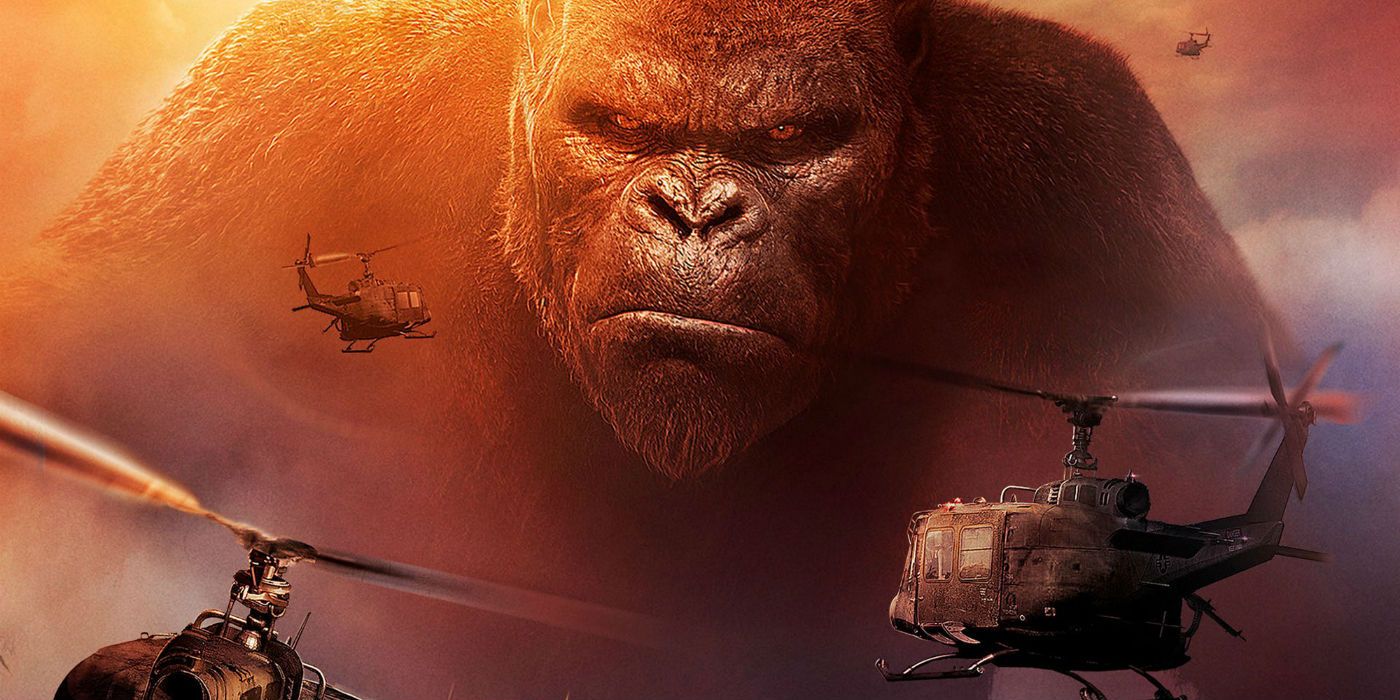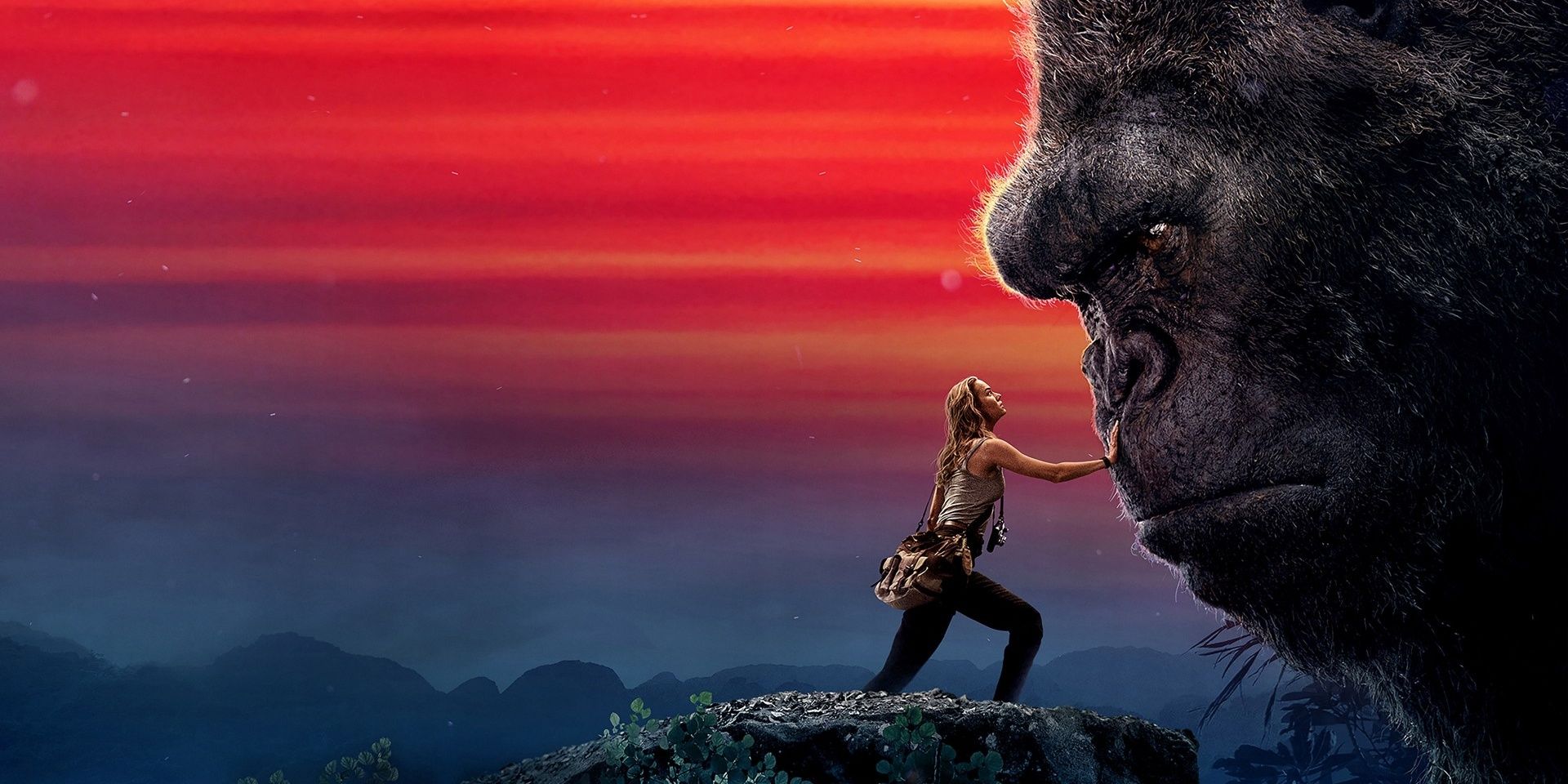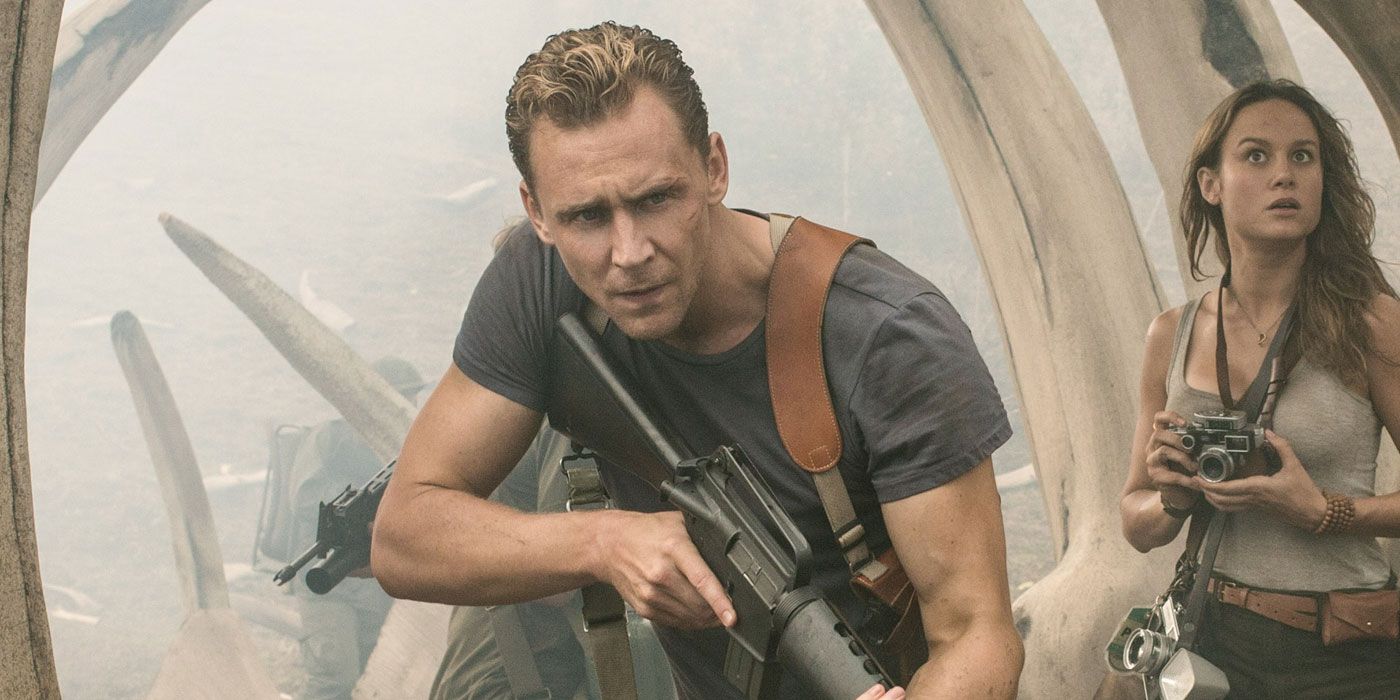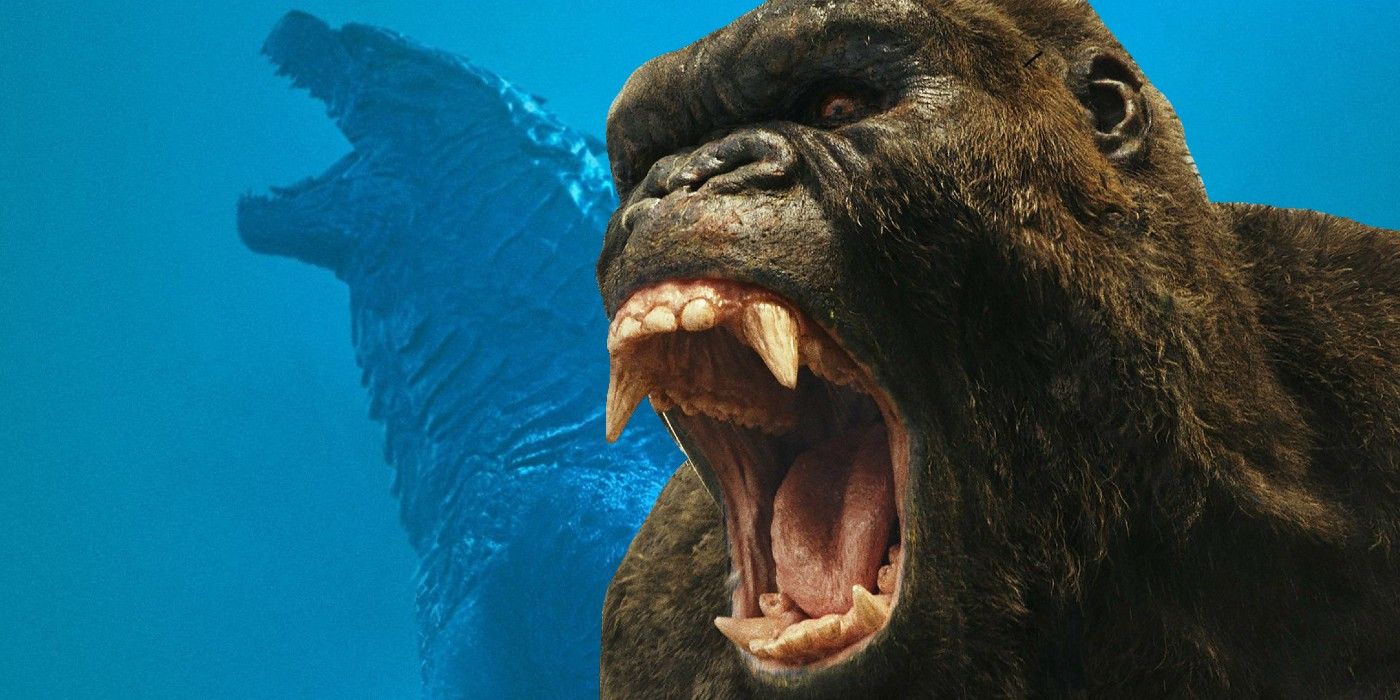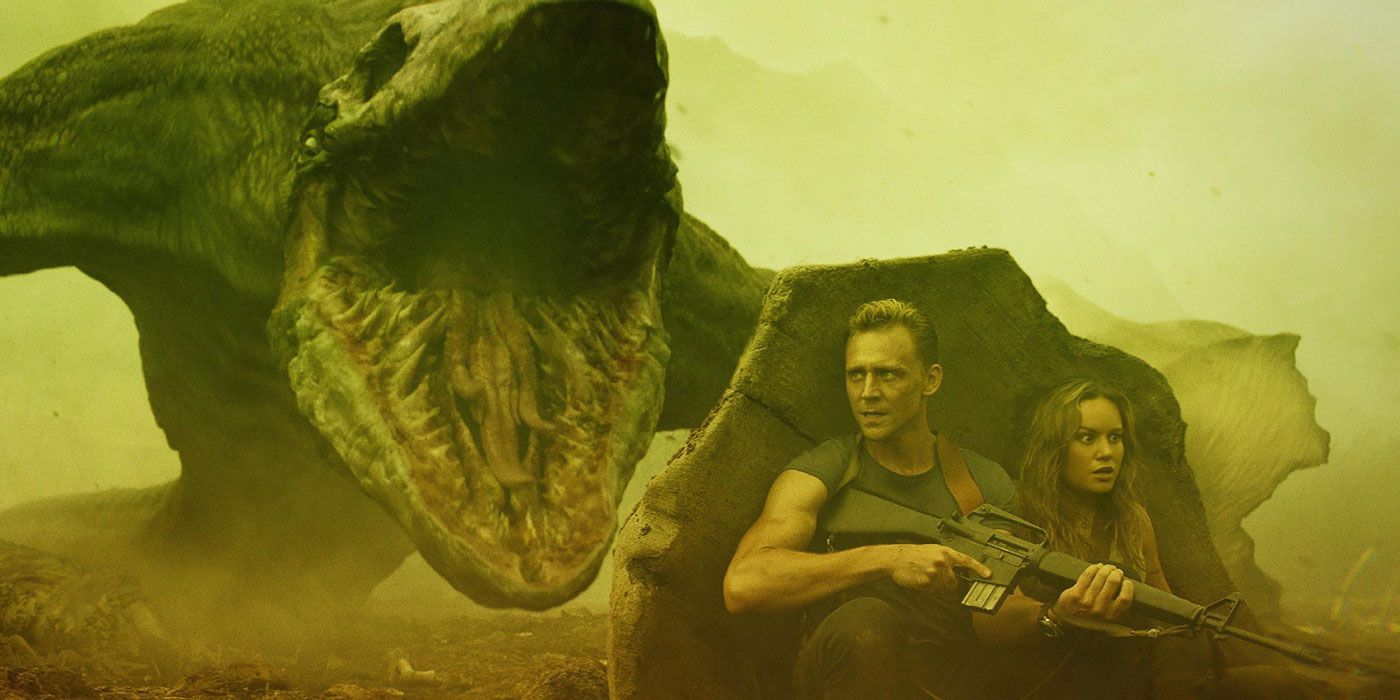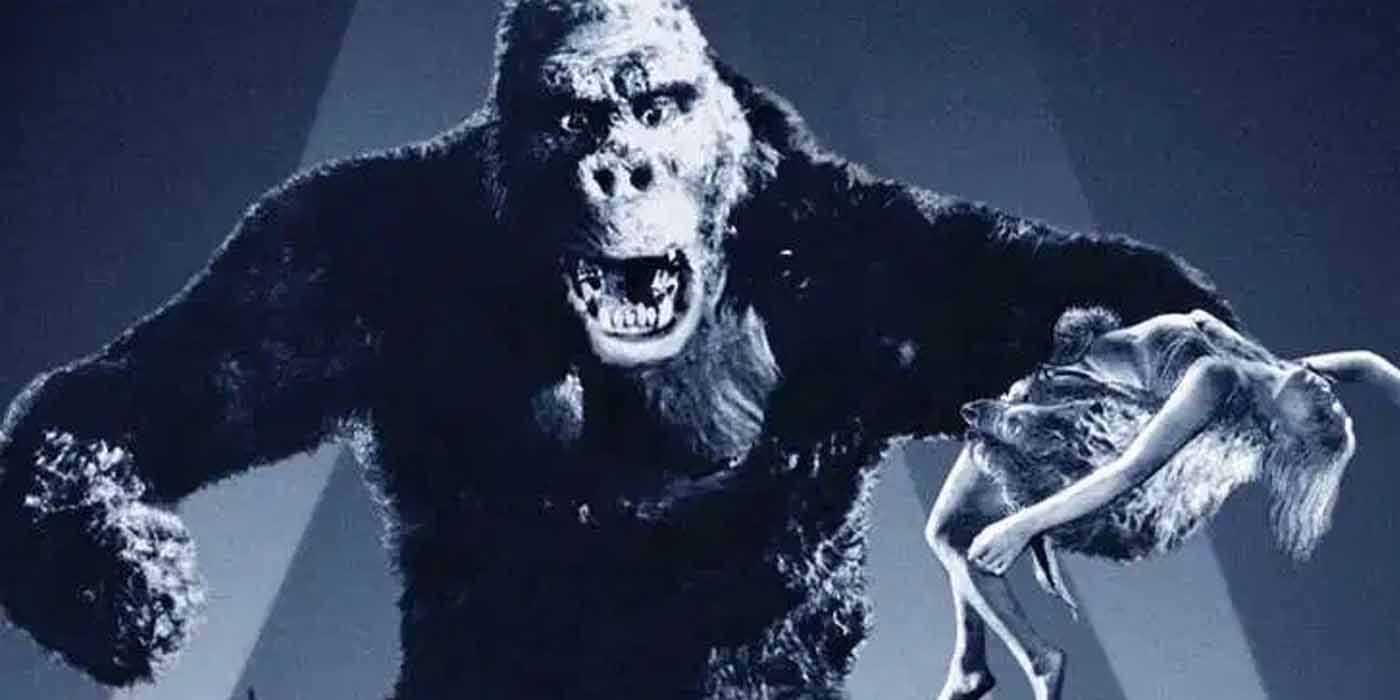Kong: Skull Island remains one of the most fondly remembered entries in the Monsterverse thanks to its bombastic energy, memorable characters and the incredible world of Skull Island. Kong's war against the Skullcrawlers stands out among Kong's other films. Fans who picked up the novelization of the film quickly realized that there are some intriguing differences between the book and the movie.
Some of the differences add to the film while others contradict certain events. However, while many of these differences are relatively small, a few of them could have a major impact on the Monsterverse. So which differences between Kong: Skull Island and its novelization are the most intriguing?
Brie Larson's Mason Weaver Had a Backstory
In the film version of Kong: Skull Island, Brie Larson's Mason Weaver is essentially an anti-war photographer brought on-board to document the natural life of Skull Island and provide tangible proof that Monarch isn't just a crackpot organization. In the film, that's all the backstory you receive for her. However, the novelization delves into her personal and tragic history.
In the novelization, we learn that Mason's father was a stern figure in her life. She constantly tried and failed to live up to his impossible standards, always pushing her to be more than she was. Following her father's death, she searched for meaning through her photography. However, her camera sort of existed as a barrier, keeping her at arm's length from her subjects.
This backstory offers a poignant look at Mason's character, especially when we consider how the adventure forces her to engage very actively with her subjects. All of this culminates in Mason's Skull Island arc when she begins to feel emotionally connected to life for the first time. Throughout her career, she's photographed death and destruction, but she finds value in her work here. Conrad -- who is far more romantically interested in her in the book -- even encourages her to find meaning in her life independent of her father.
Tom Hiddleston's James Conrad Was Treated as Expendable By His Government
In Kong: Skull Island, Tom Hiddleston's James Conrad is an ex-British Special Air Service Captain who served prior to Vietnam. However, he now works as a freelance tracker -- the best of the best in his field. Much like Weaver, Conrad's past is not explored in the film. The novelization, however, sheds light on why Conrad is a freelance tracker -- and it isn't a particularly heartwarming reason.
Eight years prior to the events of the film, Conrad is sent on a mission to rescue the young daughter of a British assemblyperson. However, while Conrad and his crew found the young girl, a sniper was waiting for him. The shooter killed his men dead, along with the young girl. This led to him losing faith in the government, as well as his own capabilities. Conrad explains this very dark back story to Mason, which helps characters grow closer over the span of the story.
Kong Fought Godzilla and King Ghidorah?
Kong's primary enemy in both the film and book versions of Kong: Skull Island is the Skullcrawlers, a race of subterranean monsters who burrow underneath the island and attack Kong from below. However, they are far from the only threats Kong defends the island from, as indicated by a series of cave drawings detailed in the book.
In the film, Kong in shown hunting and killing a squid for food, but the cave drawings outlined in the book also depict Kong fighting giant reptilian monsters, gigantic crocodile monsters, and even other kaiju. It's possible that the crocodile monster could be Godzilla. One of the reptilian monsters sports three heads. It is possible that this could be a crude depiction of Kong warding off King Ghidorah at some point in the past. At the very least, there are monsters other than the Skullcrawlers.
Interestingly enough, when the book adapts the post-credits scene where Mason and Conrad are shown cave drawings of Godzilla fighting Ghidorah, the book makes them drastically different, only alluding to multiple monsters, some of which are hard to recognize as Godzilla or Ghidorah.
The Skullcrawlers are Far More Insidious
The Skullcrawlers in the film are already pretty twisted and monstrous creatures. They are demonstrated to be vicious, murderous fiends who slaughter all in their path. However, the book manages to make them even more horrific by altering their anatomy and giving them special powers.
Throughout the fight with the Skullcrawlers, the heroes realize the Skullcrawlers have pretty weird bodies, such as growths that resemble eyes but turn out to not be eyes. The Skullcrawlers also sport gills that can allow them to depart from the island if they should ever decide to leave Kong alone. Most disturbing of all, the Skullcrawlers can mimic human speech.
This is how Gunpei Ikari, the Japanese soldier trapped on the island with John C Reilly's Hank Marlow, is ultimately killed. A Skullcrawler mimics the sound of a native girl in pain, drawing Ikari over, only to find the girl he was trying to rescue was in actuality a Skullcrawler hunting for flesh.
The Original King Kong Film Might Be Canon (Sort Of?)
One of the most peculiar and most pointed references in the novelization of Kong: Skull Island is a reference to the original 1933 King Kong film. At one point in the novel, John Goodman's character Bill Randa goes over the various mysteries surrounding Skull Island itself. Among the greater mysteries, he references that a film crew came to the island in 1933, but disappeared without a trace.
This is a clear reference to the original film, which centers on a film crew lead by Carl Denham traveling to Skull Island to film a new picture, only to be caught up in the chaos of Kong's natural world. Of course, the events of King Kong would not have transpired in this continuity the same way they did in this film. The crew never returned with Kong, and, therefore, never confirmed to the world Kong's existence. On top of that, with the island natives being so different in this film, it's unlikely they kidnapped or attacked the crew.
Arguably the biggest difference, however, is that we have no idea how the crew was killed. Because the original film featured dinosaurs on the island while Kong: Skull Island features megafauna of all sorts, it's uncertain how everyone met their untimely deaths. Perhaps the simplest explanation is true: the Skullcrawlers ate them all.

